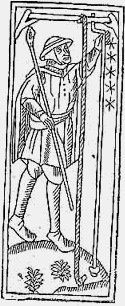Mimers
Lee, what a stunning observation! I was thinking while reading your post how I also read an observation that the chakras upsidedown represented the color spectrom of the rainbow. Making me consider that to really have that connection to the Divine, we must disconnect and go against the flow.
The same holds true with the tree of life. Upside down, Kether is on top towards the heavens and Malkuth is at the bottom towards earth. It says to me that in order to face our trials in life, we really have to remove ourselves from the mainstream to connect with the Divine/God, in order to truely get rid of our limitations.
Thanks Lee! It was nice to see you here. I too love the colors on the Camoin.
take care,
Mimi
The same holds true with the tree of life. Upside down, Kether is on top towards the heavens and Malkuth is at the bottom towards earth. It says to me that in order to face our trials in life, we really have to remove ourselves from the mainstream to connect with the Divine/God, in order to truely get rid of our limitations.
Thanks Lee! It was nice to see you here. I too love the colors on the Camoin.
take care,
Mimi


